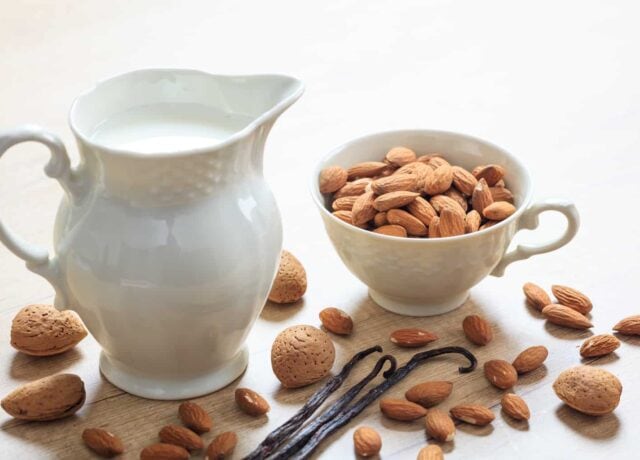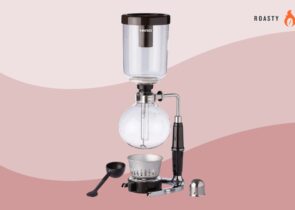The appeal of the French press lies in its simplicity. La cafetière doesn’t fuss around with power cables or mandatory brewing accompaniments.
All a French press needs to brew a strong and flavorful cup of joe is ground coffee, hot water, and at least four minutes of your time.
But does this straightforward approach to brewing mean that all French presses are built the same? I certainly thought so, at least before working in the coffee industry.
I’ve been using a French press since my days as an IT professional. It was easy enough to integrate into my pantry coffee break!

My first French press was a glass Bodum Kenya purchased from my local Starbucks. After the carafe broke, I replaced it with a thrift store find that was also made of glass, but adorned with fancy gold-plated bits. My coffee tasted exactly the same.
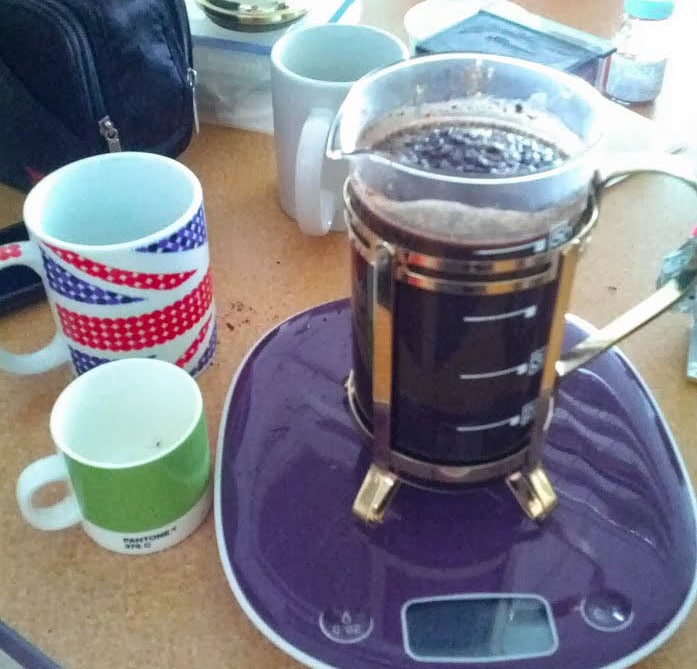
I kept buying glass French presses simply because they were top of mind. These days, modern contenders clad in stainless steel present a compelling alternative to what’s essentially become the norm. In this comparison, we pit glass against stainless steel to find out if there’s a difference between each French press — from durability, to taste, and all the way until clean-up time!
Why Are Glass French Presses Popular?
The French invented the first iteration of the coffee press, almost two centuries ago. But today’s French press has more in common with a patent filed in 1929, which many coffee equipment manufacturers quickly adopted (or copied!).
Bodum doubled down on this design in 1974 with the release of the Bistro, the company’s very first French press. This glass model was lauded for its low environmental impact and minimalist style, winning multiple awards and the hearts of brewers around the world.
However, it was the relaunch of an iconic design from the 50s that turned the brew method into a household name.
Bodum’s Chambord is a supremely handsome glass and steel affair, widely considered to be the most recognized French press ever (and the most copied, if you look again at my press above).
For decades, glass coffee presses like the Bistro and Chambord were regarded as the cream of the crop. La Cafetiere, another popular manufacturer that inspired the brewer’s English nickname, also primarily sold presses of the glass variety.
It was an easy choice for manufacturers during this time. As a material, glass is beautiful, cheap to produce, and perhaps most importantly, food-safe.
Materials Used In the French Press
A French press is composed of two main parts: a carafe that holds the coffee, and a plunger assembly that doubles as a lid.
The carafe itself is commonly made of glass, but also comes in steel, ceramic, and plastic options. Secondary materials such as metal or plastic form the handle and other structural bits protecting the carafe.
Most of the plunger assembly is made of stainless steel. This makes sense since the plunger rod, mesh filtration screen, and filter base comes in contact with the coffee.
More liberties are taken with the lid material; you’ll see those in metal, plastic, and even bamboo!
There are dozens of coffee press manufacturers and hundreds of models, each with variations in function and style. So before we do a good ol’ compare, let’s first define what makes up a glass or a stainless steel French press.
The Glass French Press
For a glass French press, let’s assume that the carafe is made of single-walled, (ideally!) heat-resistant glass. The structural frame, handle, and lid can be any material.
Affordable models will use plastic bits on a glass carafe, like this one from IKEA. More premium models will often use high-quality metal or wood trimmings. This is an aesthetic choice that isn’t likely to affect how it performs in the coffee taste department.
Double-walled variants exist but are more of an exception than the norm. If you own one of these, it will have the same characteristics as a stainless press in our taste and heat retention category.
The Stainless Steel French Press
Stainless steel coffee presses are, you guessed it, made with food-grade stainless steel. This choice also offers superior insulating properties.
Virtually all presses made with this material are double-walled — from the cheapest one on Amazon to this premium Frieling model that we gave high marks.
It’s also worth noting that the superior plunger assembly is found on most of the models you can locate online.
Except for a couple of the cheapest options and (surprisingly) Bodum’s steel-bodied offering, every other stainless steel press came with a filtration system that’s better than standard.
Glass vs. Stainless Steel: Which is Better?
Short answer: It depends! Therefore, we’ve broken this down per category, with our recommendations for each. I even threw in a couple of tests to satisfy fellow coffee snobs!
Durability
Let’s start with the most obvious category. Stainless steel is more durable than glass — there’s no question about it.
That doesn’t mean you shouldn’t care about the type of glass in your French press. In fact, picking borosilicate or tempered glass offers greater resistance to light impact and rapid temperature changes. With proper care, your press will still last you a very long time.
However, in a busy café setting where speed and efficiency are important, stainless presses stand up better to abuse. There are also models made for travel and other outdoor activities, such as the portable Espro Travel Press.
So, the winner in this category? Stainless Steel.
Style
To us, glass French presses are simply the kings of style. The glass carafe is encased in a variety of materials for the lid, handle, and structural frame. These pieces are cast or formed in different shapes in a wide range of colors or finishes to suit every aesthetic.
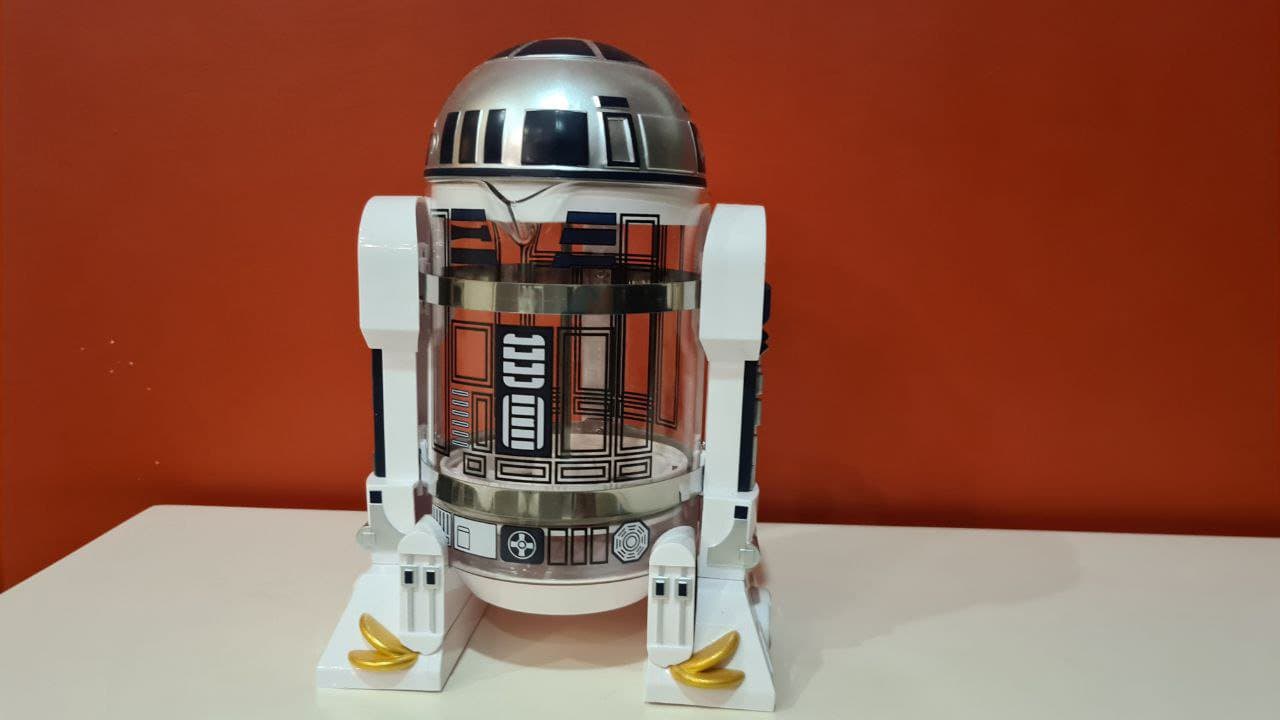
Another advantage to a glass build is the visual experience. Watching your coffee brew is part of the ritual for many people, myself included. If you brew without a scale, it’s easy to find out when to stop pouring if your press is made of glass.
Stainless presses look attractively sleek, which is something I like. As well, there are some fun finishes out there, like the matte orange in this stainless steel Coffee Gator press.
However, not everyone will enjoy this look, and with age and abuse, the otherwise durable steel press will begin to show off unsightly scratches and dents.
As we can see, glass measures up in this category.
Price
Glass is simply cheaper to produce than Stainless Steel. A quality French press can be had for under ten bucks!
Sticking to a common size and style of the coffee press will make replacement carafes cheaper and easier to find (Yes, you will inevitably break it!).
Stainless steel fans will argue that its price premium is worth its weight in longevity. But for the occasional brewer, spending three to four times as much money might not be an option.
Overall, glass takes the cake when it comes to pricing.
Filtration
Most glass French presses come with a simple filter screen that removes most — not all — of the grit. With only a few exceptions, virtually every stainless press on the market has a better filtration system.
Most models, like the Barista Warrior we reviewed, use a double or triple-stacked mesh filter, which will already make a big difference in cup clarity.
However, all Espro presses use an impressive vacuum-sealed dual-screen mesh cage, with an option to carry paper filters for the ultimate filtration!
Therefore, stainless steel is the winner in this category.
Taste
Ah, another subjective topic: taste preference, the most debatable factor when it comes to making a cup of coffee. Strap yourselves in for a long one.
Full disclosure: I didn’t have a stainless steel press on hand, but I thought a real-world test was essential, so we made it work!
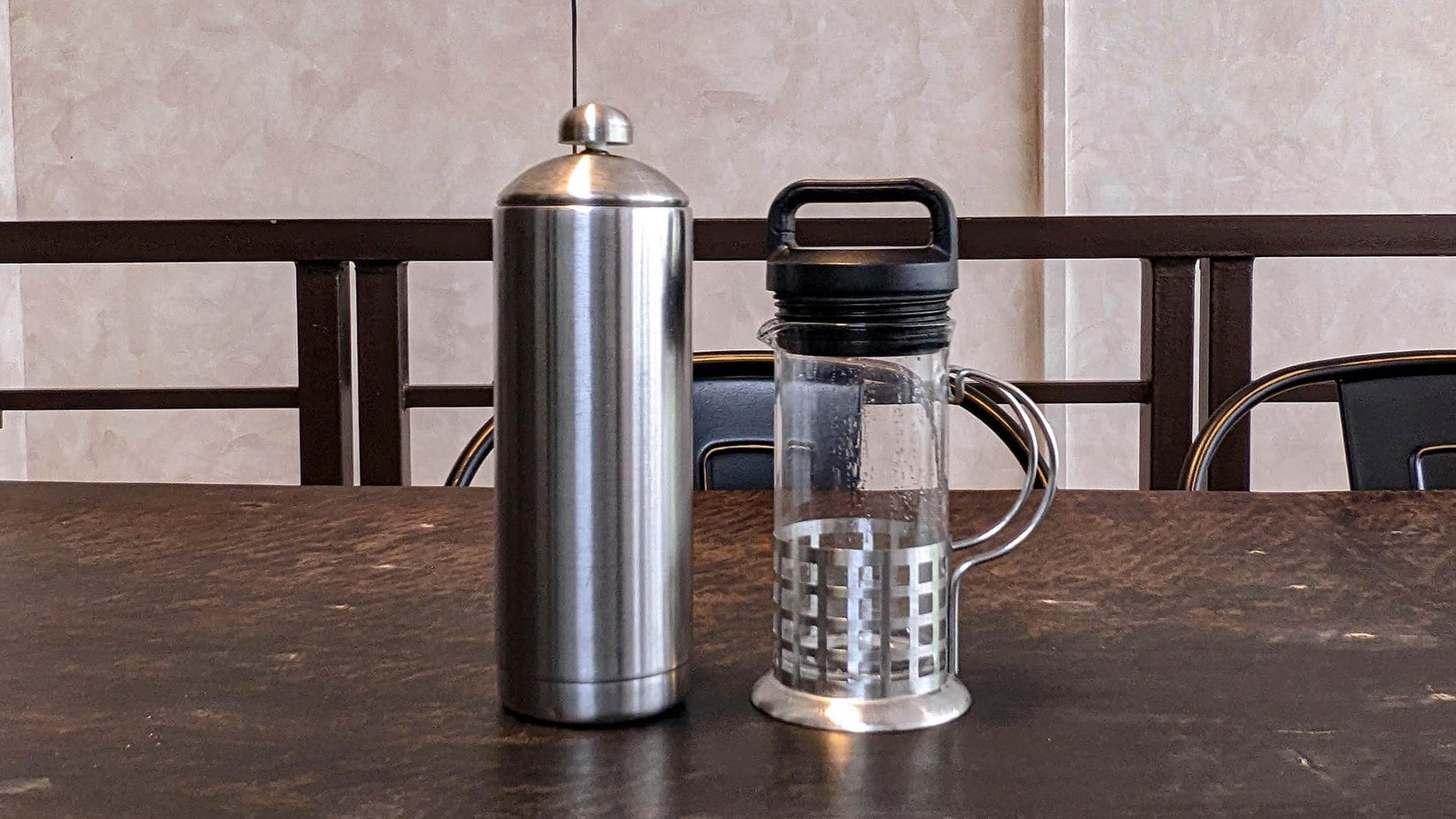
Meet my YETI Rambler. It’s my favorite tumbler to use, and it does a great job of keeping my coffee piping hot. One of my coffee presses has a lid and plunger assembly that fits the top of my tumbler perfectly. Thus, we can do a proper comparison!
I pitted my 500ml YETI stainless steel “coffee press” against a 17oz glass, to keep things even-steven. I then brewed the same coffee with the same brew recipe on each one.
Finally, both presses were plunged and poured out the same way, down to identical weights poured into a cup.
We used the following parameters:
- 15 grams of coarsely-ground coffee
- 180 grams of water (Brew Ratio: 1:12)
- 4-minute steep
- 160g of brewed coffee poured out
It’s assumed that the insulating effect of the stainless press helps keep things hotter, therefore making extraction more efficient during the brew. More extraction equals more flavor, right? Well, we wanted a tangible way to test this theory.
Say hello to the ATAGO coffee refractometer. You can read about what it does through its rather entertaining manual, so I won’t go into much detail.
To put it simply, you put a bit of brewed coffee onto its glass lens, and it spits out a number (in %TDS, or total dissolved solids).
We brewed some Guatemala Ayarza Vinoso and recorded the %TDS on each before tasting the actual cups of coffee. Testing precision is very important when comparing, so I made sure to cool both samples the same way before recording %TDS multiple times.
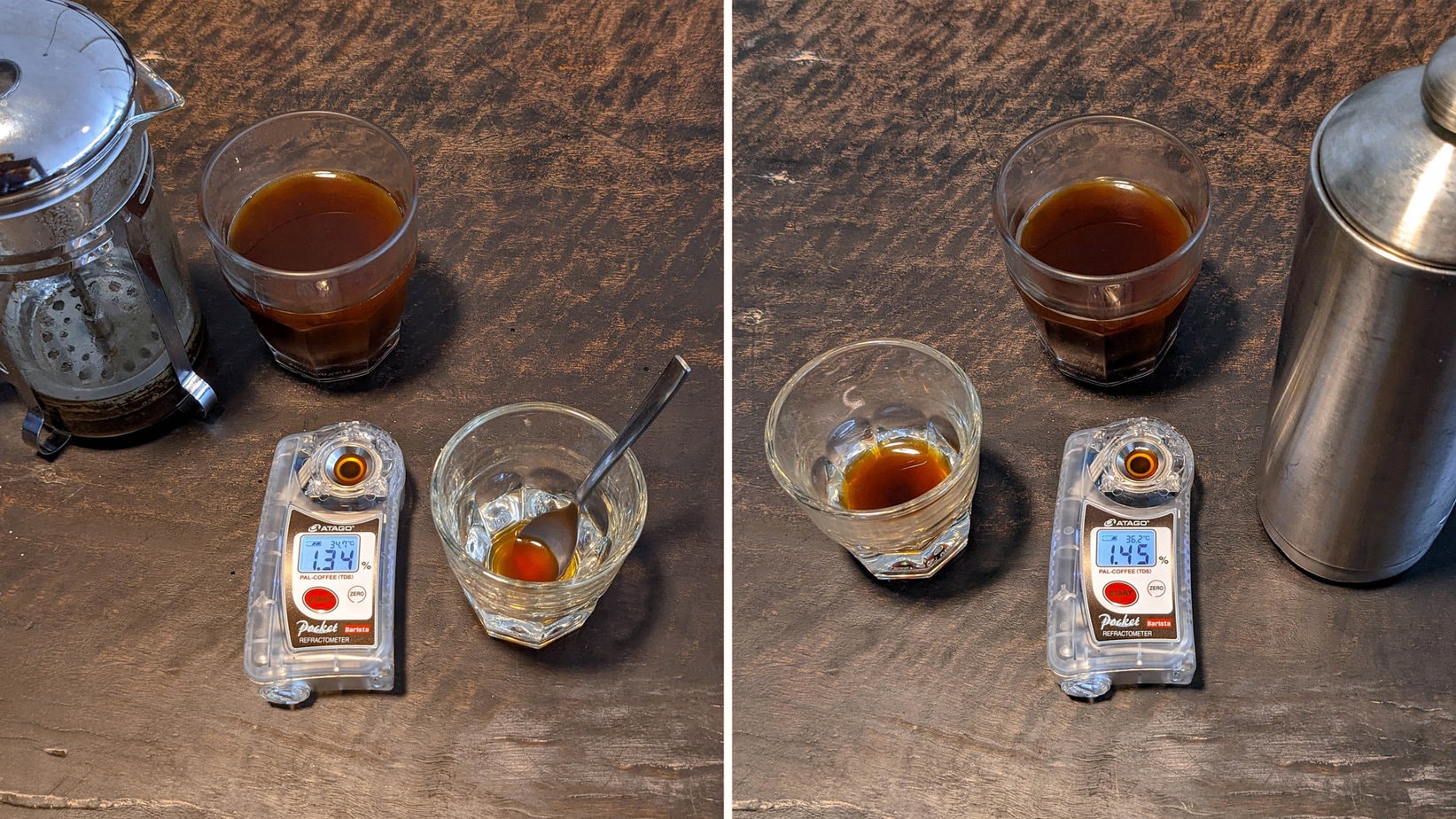
For %TDS, generally, the higher, the better (up to a point). The stainless steel press definitely made a more concentrated cup of coffee. But we’re talking about taste, not strength.
This means some math is necessary to compute extraction, or how much of those yummy solubles from the beans made it into our cup.

Based on the coffee brewing control chart (the industry’s standard brew measurement guide), an extraction yield of 18-22% is considered ideal. A 1:12 coffee-to-water ratio makes a strong, if slightly under-extracted, coffee for both types of French presses.
From the results, we can see that the stainless steel press, given all things equal, extracts more solubles. Basically, the double-walled material gives us a stronger and yummier coffee flavor!
You might ask: But Jonathan, can’t I just grind finer or brew longer? You’d be correct! But in this instance, it’s an undeniable fact that double-walled stainless steel just brews more efficiently than its glass counterpart.
What about subjective taste preference? This Guatemalan is known for chocolate notes and wine-like acidity.
Judged blindly, I found that the glass press made a slightly more sour brew, and the stainless steel press had a rounder, dried fruit flavor that I quite enjoyed. So the winner of this category? Undeniably, the Stainless Steel press.
Heat Retention
We used the same setup from our taste test for a much simpler evaluation this time around. Logic tells us that double-walled stainless steel will retain more heat due to its insulating properties, but will it make much of a difference?
For this test, both presses were pre-heated before brewing. The same brew recipe was used on both presses, and the same amount of coffee was poured out into a pre-heated glass, similar to what we did in the taste category.
We used a high-precision thermometer to record the temperature of the brew in the glass, recording the highest point, before the temperature slid back down.
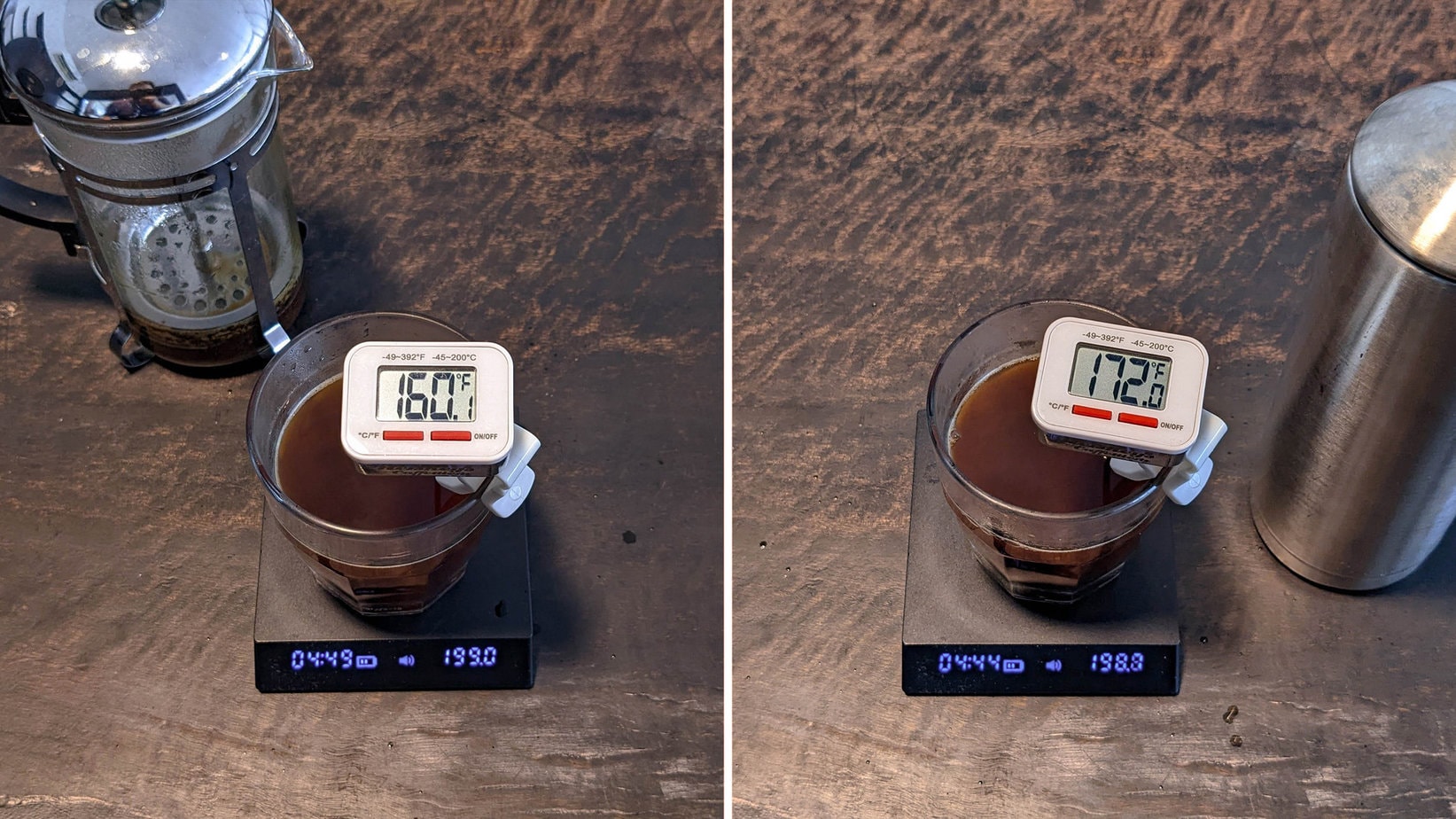
The results are pretty much consistent with our guesses. Despite having the lid off during the brewing process, our Franken-YETI stainless steel press kept our brew positively toasty, at 172°F (78°C)!
Meanwhile, the glass press kept the brew at a respectable 160°F (71°C).
Overall, the winner for this category is the stainless steel press.
Clean Up
Stainless steel, especially the 304 or 18/10 types we often see in food-safe materials, is resistant to rust and corrosion. But up close, the surface is rougher than glass or porcelain, making it easier for oils to stick.
Getting your steel press squeaky clean is less straightforward than a glass press, where your efforts are a lot more visible. Yet it’s in your best interest to do this, because a build-up of coffee oils will be progressively harder to remove over time, also causing those off-flavors that are associated with stainless steel.
Regardless of your pick, periodic deep-cleaning is essential to enjoying a longer life out of your coffee press.
When weighed in the balance, glass is the best choice when it comes to the clean-up process.
Conclusion
If you’re looking to get your first press coffee maker, then a glass French press is a good idea. It’s cheap, it makes excellent coffee, and you’ll enjoy watching the brewing process as it happens.
However, if looks and cost don’t matter to you, a double-walled stainless steel press will effortlessly give you a hot and great-tasting brew. They’re pretty much indestructible too!
Happy Caffeinating!




